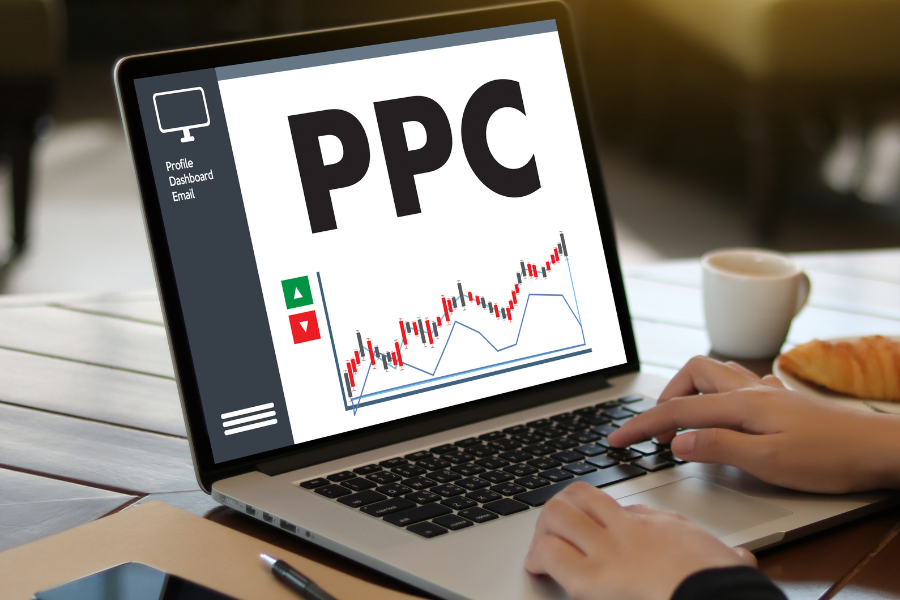The International Executive MBA is designed to solve the most critical challenges faced by leaders like you in a globalised and constantly changing business env
 Blog
BlogThe Importance of ROI in Online Advertising
In today's digital environment, companies are looking to maximise their advertising investments - every euro counts! That is why a key indicator in business is the Return on Investment (ROI). In the context of digital advertising, ROI becomes a decisive factor in evaluating the success of campaigns and determining future strategies.
In this article, we will delve into how digital advertising and ROI are intrinsically connected, the tools available to measure this indicator and how to optimise your campaigns for the best possible performance.
What is ROI and why is it key in digital advertising?
ROI, or Return on Investment, is a financial metric that indicates the profit you make in relation to the investment you make. In other words, it is the profit generated by an investment, whether in an advertising campaign or in any other business activity.
In the world of digital advertising, ROI measures not only whether a campaign is profitable, but also its effectiveness in meeting business objectives. For example, if a company invests €1000 in a Google Ads campaign and generates sales of €2000, the ROI would be 100%. This means that for every €1 invested, the company has made another €1 profit.
However, ROI is not always about direct revenue. In campaigns where the goal is to generate leads, increase website traffic or improve brand awareness, it is important to understand how to measure success and adjust strategies to maximise long-term returns.
Practical example of ROI calculation
Let's say we invest £2000 in a Facebook Ads campaign and the sales generated by the campaign reach £2500. To calculate ROI, we use the following formula:
ROI = [(Revenue - Investment) / Investment] x 100.
Applying the formula:
ROI = [(2500 - 2000) / 2000] x 100 = 25%.
This means that the campaign has generated a positive return of 25%, indicating that it was a profitable investment.

Tools and strategies to improve ROI in digital advertising
One of the great advantages of digital advertising is the ability to accurately measure campaign performance. Unlike traditional advertising, where it can be difficult to track the exact impact of an ad, in the digital environment everything is quantifiable.
For this reason, platforms such as Google Ads, Facebook Ads and LinkedIn Ads offer integrated tools that allow detailed tracking of audience behaviour and ad performance.
Use Big Data to understand your audience
Big Data refers to the massive amount of data generated every second in the digital world. Analysing this data allows you to identify behavioural patterns of your audience, which is key to personalising and targeting your campaigns.
With proper targeting based on interests and behaviours, you can design more effective ads that reach your target audience precisely, increasing the likelihood of a higher ROI.
Google Ads and keyword optimisation
Google Ads is one of the most powerful advertising platforms for generating traffic and conversions. However, to maximise ROI, it is essential to work on keyword optimisation.
By targeting ads with specific, high-intent keywords, it is possible to capture users who are already actively searching for your products or services, which reduces the cost per click (CPC) and improves overall campaign performance.
In addition, tools such as Google Analytics allow you to track traffic and conversions generated from your Google Ads campaigns, making it easier to measure and analyse performance and adjust strategies based on results.

Social media advertising: targeting and personalisation
Social networks such as Facebook, Instagram, LinkedIn and TikTok Ads offer unique opportunities to connect with specific audiences. Through precise targeting, it is possible to show ads only to those users who match your brand's buyer persona, which maximises the chances of success and improves ROI.
A practical example would be to use a different URL on each platform to effectively track which social network conversions are coming from. This method not only helps to improve sales attribution, but also helps to identify the best performing channels.
Programmatic and rich mediaadvertising
Programmatic advertising is an advanced tool that uses artificial intelligence to automate the buying of advertising space in real time. This technique not only improves the efficiency of campaigns, but also allows for hyper-precise targeting of audiences based on their online behaviour.
By combining programmatic advertising with rich media, such as interactive and dynamic ads, it is possible to engage the user more effectively and increase the likelihood of conversion, which positively impacts ROI.
Combining the online and offline worlds
Although a large proportion of sales today are generated online, we cannot discount the importance of the offline world. Many times, customers see an ad online, but the final conversion happens through a phone call, a face-to-face meeting or a WhatsApp message. This is where combining the digital and offline worlds comes into play to get a more complete picture of ROI.
A common strategy is to use different phone numbers, email addresses or specific URLs for each advertising channel, allowing for efficient tracking of which platform the customer is coming from. In this way, companies can correctly attribute conversions and adjust their budgets towards those channels that generate the best results.
Measuring and Analysing ROI: Keys to Success
In a digital environment where everything is measurable, data analysis becomes an essential aspect of optimising ROI. Tools such as Google Analytics, Facebook Insights and ad platforms such as LinkedIn Ads and TikTok Ads offer detailed metrics on campaign performance, including cost per click (CPC), conversion rate and return on investment.
Steps to measure the success of a digital campaign
- Define clear objectives: Before launching a campaign, it is essential to establish what you hope to achieve: is the goal to generate direct sales, generate leads or increase website traffic? Defining clear goals will allow you to measure success more accurately.
- Set up the right tracking: Use measurement tools such as conversion pixels to track the behaviour of users interacting with your ads. This is especially useful for online sales.
- Analyse results in real time: One of the great advantages of digital advertising is the ability to make adjustments in real time. If an ad is not generating the expected results, you can pause it, modify it or redistribute the budget to those ads that are working.
- Compare channels and strategies: Not all channels deliver the same performance. Comparing ROI between different platforms such as Google Ads, Facebook Ads and LinkedIn Ads will help you identify which are the most effective for your business.

Monitoring metrics in digital advertising is critical to determine the success of campaigns.
Budget optimisation based on ROI
Once you have measured ROI, the next step is to optimise your budget. As a rule of thumb, more budget should be allocated to those ads and platforms that generate a higher return. Underperforming ads, on the other hand, should be improved or eliminated.
For example, if you notice that your ads on Google Ads are generating a significantly higher ROI than on Facebook Ads, it may be more efficient to redirect some of your investment to Google Ads. Similarly, if a LinkedIn campaign is performing well in generating quality leads, it is advisable to increase spending on that channel.
The future of digital advertising and ROI
The world of digital advertising continues to evolve rapidly. The emergence of technologies such as artificial intelligence, ad automation and advanced Big Data analytics offer new opportunities to improve ROI. In addition, emerging platforms such as TikTok Ads are gaining traction, especially among younger audiences, opening new doors for companies looking to expand their target audience.
In conclusion, digital advertising offers a wide range of tools and strategies to measure, analyse and optimise ROI. By combining the online and offline worlds, using advanced data for targeting, and adjusting campaigns based on the results obtained, companies can maximise their profitability and achieve their business objectives more efficiently. Don't forget that every investment must be justified and everything is measurable; the key is knowing how to analyse and act on that data.
And if you want to know more about digital advertising and digital marketing campaigns, our International Master in Digital Marketing is waiting for you. Specialise in an area that increasingly demands more qualified and up-to-date professionals. Choose your future with ENAE!


Agri-food is a strategic sector for both the national and international economies.



A company or organization that anticipates, identifies needs and threats, foresees, and makes strategic and operational decisions based on Comprehensive Risk Management



In ENAE Business School's Official Master in Logistics and Operations Management program, you will learn how to analyse the performance of a company's operation

Our Master in Digital International Marketing is offered both online and in a hybrid format, which integrate synchronous and asynchronous components while maxim

Business decision-making can no longer be based on intuition.













